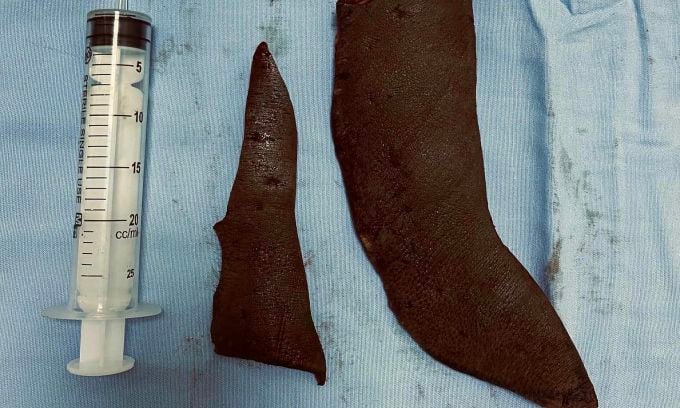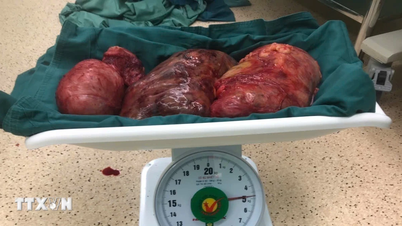Recently, the child has been itching a lot in this area of skin and bleeding. At the K Hospital in late April, the boy was diagnosed with a giant congenital melanocytic nevus on his back and neck. After consultation, the doctors agreed that the treatment plan for the child was to surgically remove the nevus. Surgery should be performed early to minimize the risk of cancer, which is 5-10%.
On May 5, Dr. Duong Manh Chien, Department of Oncology, said that congenital melanocytic nevus is a fairly common disease with about 1% of newborns, however giant congenital melanocytic nevus is quite rare with a rate of 1/500,000.
"It is called giant melanocytic nevus because the area of the lesion is more than 20 cm or more than one anatomical unit of skin," Dr. Chien explained.
This tumor usually appears at birth, has a uniform color (black), may or may not be raised on the skin, and has clear boundaries. Some warning signs of malignancy include ulcers, bleeding, and color changes.
"Giant melanocytic nevus is difficult to completely remove in one surgery," said Dr. Chien, adding that the surgeries would be performed about six months apart.
Doctors recommend that when parents see their children have unusual symptoms on their bodies such as dark, widespread or itchy birthmarks, they should go to a medical facility for examination and not self-treat with medication or cosmetic lasers. Because it could be a medical condition in children and not simply a cosmetic problem, so the treatment method needs to be carefully considered and consulted on each individual.

The melanocytic nevus was removed. Photo: Provided by the hospital
Le Nga
Source link

































































![[Infographic] Circular guiding the functions, tasks and powers of the provincial Department of Culture, Sports and Tourism and the commune-level Department of Culture and Social Affairs](https://vphoto.vietnam.vn/thumb/402x226/vietnam/resource/IMAGE/2025/6/29/877f24989bb946358f33a80e4a4f4ef5)































Comment (0)